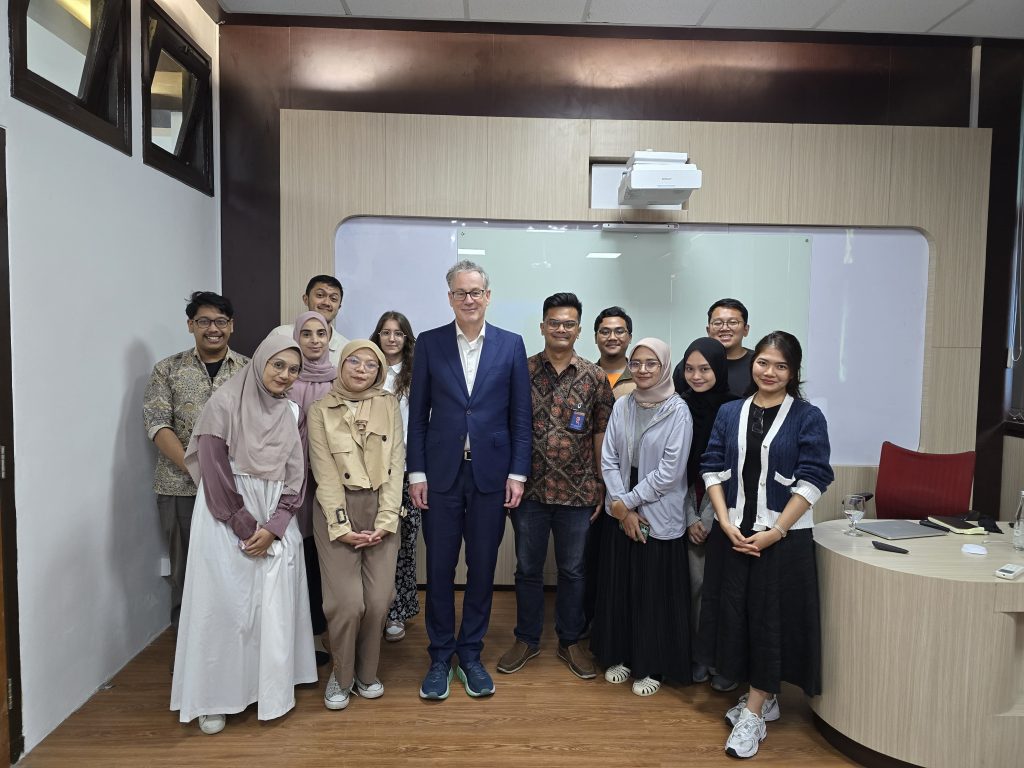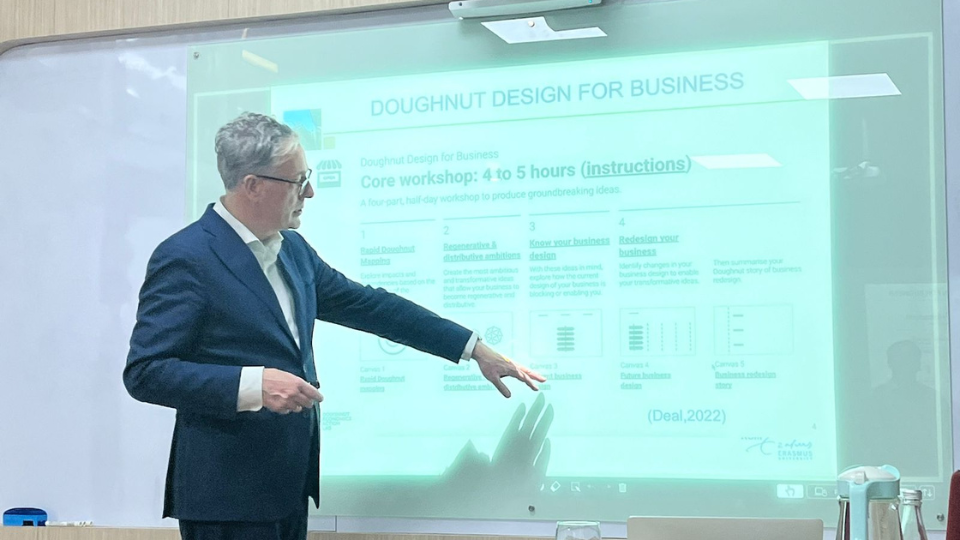“How can the economy continue to develop on a planet with limited capacity?” queried Prof. Dr. Ir. H.W.G.M. (Eric) van Heck while explaining the Doughnut Economy theory at the guest lecture “Science-Based Policy” class of the Master of Science in Management at the SBM ITB on Tuesday (13/2).
According to Prof. Eric from the Netherlands, the Doughnut Economic theory comprises three layers. The first layer encompasses the economy, followed by society, and finally, the biosphere.
As the innermost layer, the economy includes individuals, market conditions, and households. Meanwhile, society’s second layer incorporates procurement, culture, technology, and institutions. Lastly, the outermost layer comprises the biosphere, encompassing systems, global ecosystems, and biophysical resources.
Eric elaborated that with time, the global population will continue to increase. Thus, the challenge of the 21st century lies in ensuring that all human needs are met within the planet’s ecological boundaries. Humans require social foundations for survival, encompassing health, education, food, water, energy, networks, shelter, gender equality, social equality, political voice, peace, justice, income, and work.
The business realm undoubtedly bears significant responsibility in addressing this challenge. A company can either be impacted by or have a detrimental environmental impact.
Therefore, Prof. Eric delivers lectures and conducts workshops under the theme “Donut Design for Business,” aimed at fostering a business model aligned with the principles of Doughnut Economics. This workshop offers a fresh perspective for businesses aspiring to be environmentally conscious.
The workshop comprises four sessions. It begins with Rapid Donut Mapping, where participants delve into the impacts and dependencies across the dimensions of the three layers of Doughnut Economics.
Subsequently, participants are encouraged to devise ambitious and transformative ideas under Regenerative and Distributive Ambitions. This segment entails thought-provoking questions to inspire participants to generate ideas conducive to creating more regenerative and distributive businesses.
Following idea generation, the next step involves identifying existing business designs, and discerning which ones are worth continuing and which need reconsideration. Finally, participants engage in redesigning by amalgamating the identified business design groups with the initial ideas, forming a new business design grounded in the principles of Doughnut Economic theory.





